
The 93d Air Ground Operations Wing is a United States Air Force unit assigned to Air Combat Command, Ninth Air Force. It is stationed as a tenant unit at Moody Air Force Base, Georgia.

The 376th Air Expeditionary Wing is an inactive wing of the United States Air Force. It was last stationed at the Transit Center at Manas International Airport, Kyrgyz Republic, supporting U.S. and ISAF operations in Afghanistan.

The 456th Bombardment Wing is an inactive United States Air Force unit. It was last assigned to the 14th Air Division of Strategic Air Command at Beale Air Force Base, California, where it was inactivated on 30 September 1975. The wing's predecessor was the 456th Bombardment Group, a World War II United States Army Air Forces combat organization that flew from Italy while assigned to Fifteenth Air Force. It earned two Distinguished Unit Citations for valor in combat and participated in the strategic bombing campaign against oil production targets including those near Ploiești, Romania, attacks that resulted in high bomber losses. The group also served as a troop carrier unit in the Air Force Reserve from 1947 to 1949 and as the flying element of the wing from 1952 to 1955.
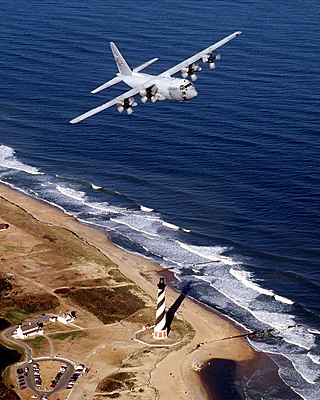
The 43rd Airlift Wing is an inactive United States Air Force unit last stationed at Pope Field, part of Fort Bragg, North Carolina, where it was inactivated in March 2011. The wing performed en route operations support at Pope Field to include mission command & control, aircrew management, aircraft maintenance, aircraft loading, aircraft fueling and supply. Since the wing's inactivation, the 43rd Airlift Group has carried out airlift, maintenance, and base support at Pope Field.

The United States Air Force's 6th Air Refueling Wing is the host wing for MacDill Air Force Base, Florida. It is part of Air Mobility Command's (AMC) Eighteenth Air Force. The wing's 6th Operations Group is a successor organization of the 3d Observation Group, one of the seven original combat air groups formed by the United States Army Air Service shortly after the end of World War I.

The 384th Air Expeditionary Wing is an inactive unit of the United States Air Force. Its last assignment was with the United States Central Command Air Forces, being stationed at Shaikh Isa Air Base, Bahrain. It was inactivated in 2004. The wing's mission is largely undisclosed. However, it is known that one of its missions was aerial refueling of combat aircraft.

The 320th Air Expeditionary Wing is a provisional United States Air Force unit assigned to the Air Force District of Washington. It is stationed at Bolling AFB, District of Columbia. The 320 AEW may be activated or inactivated at any time.
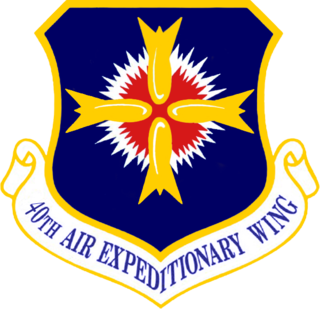
The United States Air Force's 40th Air Expeditionary Wing was an Air expeditionary unit located at Diego Garcia, in the Indian Ocean, from 2002 to c. 2006. The 40 AEW's mission was to support combat forces in Afghanistan and other combat areas supporting Operation Enduring Freedom. Operations began in October 2001.

The 416th Air Expeditionary Wing (AEW) is a provisional unit assigned to the Air Combat Command of the United States Air Force to activate or inactivate as needed.
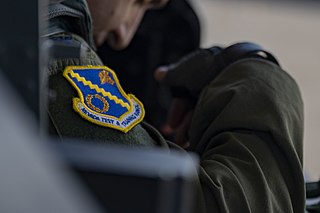
The Nevada Test and Training Range (NTTR) is a United States Air Force unit assigned to the United States Air Force Warfare Center of Air Combat Command. The unit is stationed at Nellis Air Force Base, Nevada as a tenant unit.

The 319th Reconnaissance Wing is a United States Air Force unit assigned to the Air Combat Command. It is stationed at Grand Forks Air Force Base, North Dakota. The wing is the host unit at Grand Forks.

The 303rd Aeronautical Systems Wing was a United States Air Force unit assigned to the Air Force Materiel Command Aeronautical Systems Center, 2005-2010. It was stationed at Wright-Patterson Air Force Base, Ohio as a tenant unit.
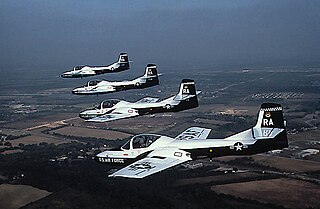
The 340th Flying Training Group is a reserve component of the United States Air Force. It is assigned to the Twenty-Second Air Force of Air Force Reserve Command, at Randolph Air Force Base, Joint Base San Antonio, Texas. The group is the headquarters for reserve flying training squadrons that are associate squadrons of Air Education and Training Command flying training squadrons.

The 454th Bombardment Wing is an inactive United States Air Force unit. It was last assigned to the 42d Air Division of Strategic Air Command (SAC) at Columbus Air Force Base, Mississippi. It was inactivated on 25 July 1969.
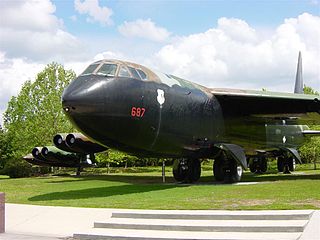
The 306th Strategic Wing, previously the 306th Bombardment Wing, is an inactive United States Air Force unit. It was last assigned to the Strategic Air Command at RAF Mildenhall, Suffolk and was inactivated on 1 February 1992. The wing's mission was to coordinate all SAC air refueling and reconnaissance resources in the European Theater with the United States Air Forces in Europe (USAFE). It assumed the mission of the 98th Strategic Wing when that unit was inactivated in 1976.

The 97th Operations Group is a United States Air Force unit assigned to the 97th Air Mobility Wing of Air Education and Training Command. It is stationed at Altus Air Force Base, Oklahoma.

The 53rd Electronic Warfare Group was a component of the 53rd Wing of the Air Force Warfare Center, Air Combat Command, headquartered at Eglin Air Force Base, Florida.

The 68th Air Refueling Squadron is an inactive United States Air Force unit. It was last assigned to the 305th Bombardment Wing at Bunker Hill Air Force Base, Indiana, where it was inactivated on 25 March 1965.

The 307th Bomb Wing is an Air Reserve Component (ARC) of the United States Air Force. It is assigned to the Tenth Air Force of Air Force Reserve Command, stationed at Barksdale Air Force Base, Louisiana. If mobilized, the wing is gained by Air Force Global Strike Command (AFGSC).


























